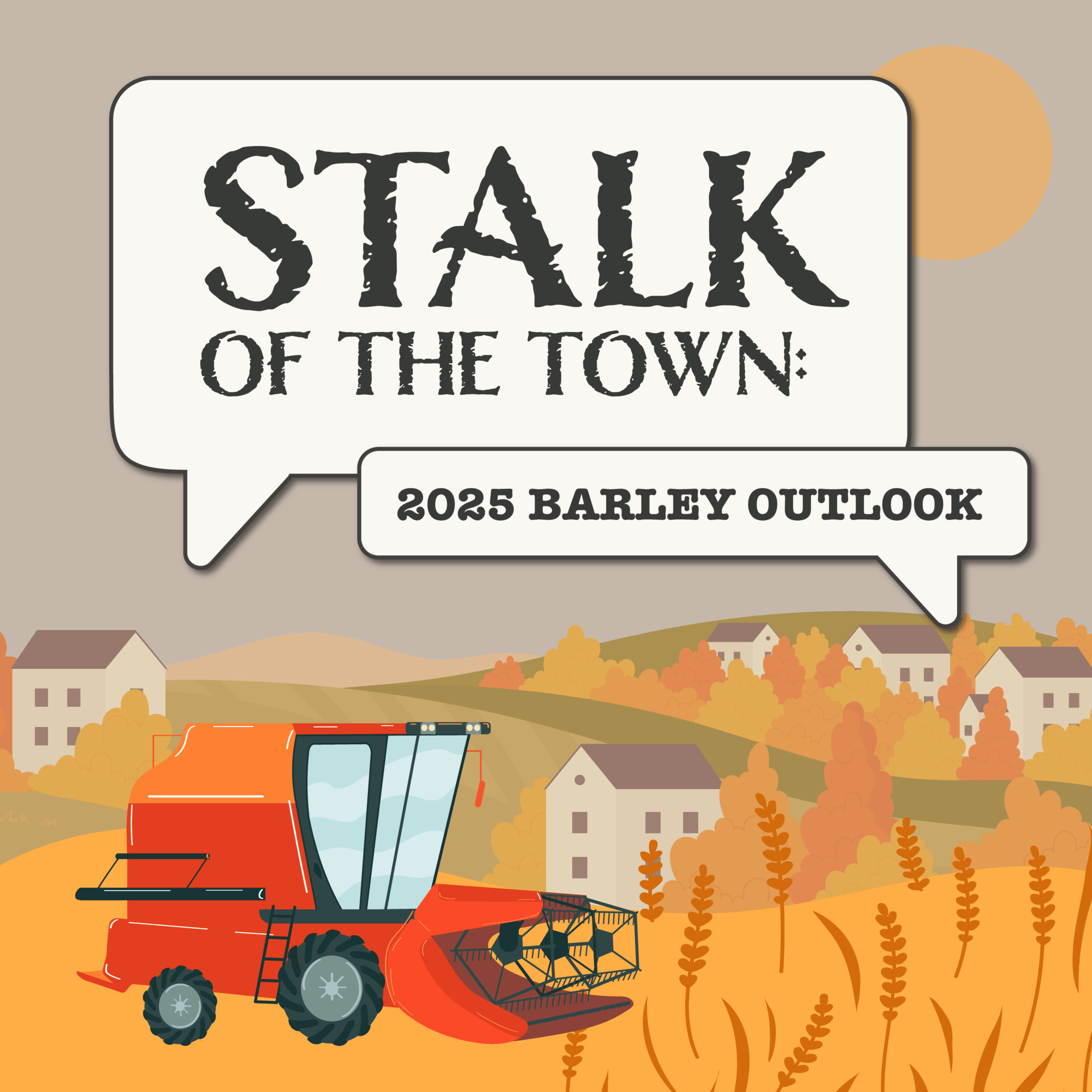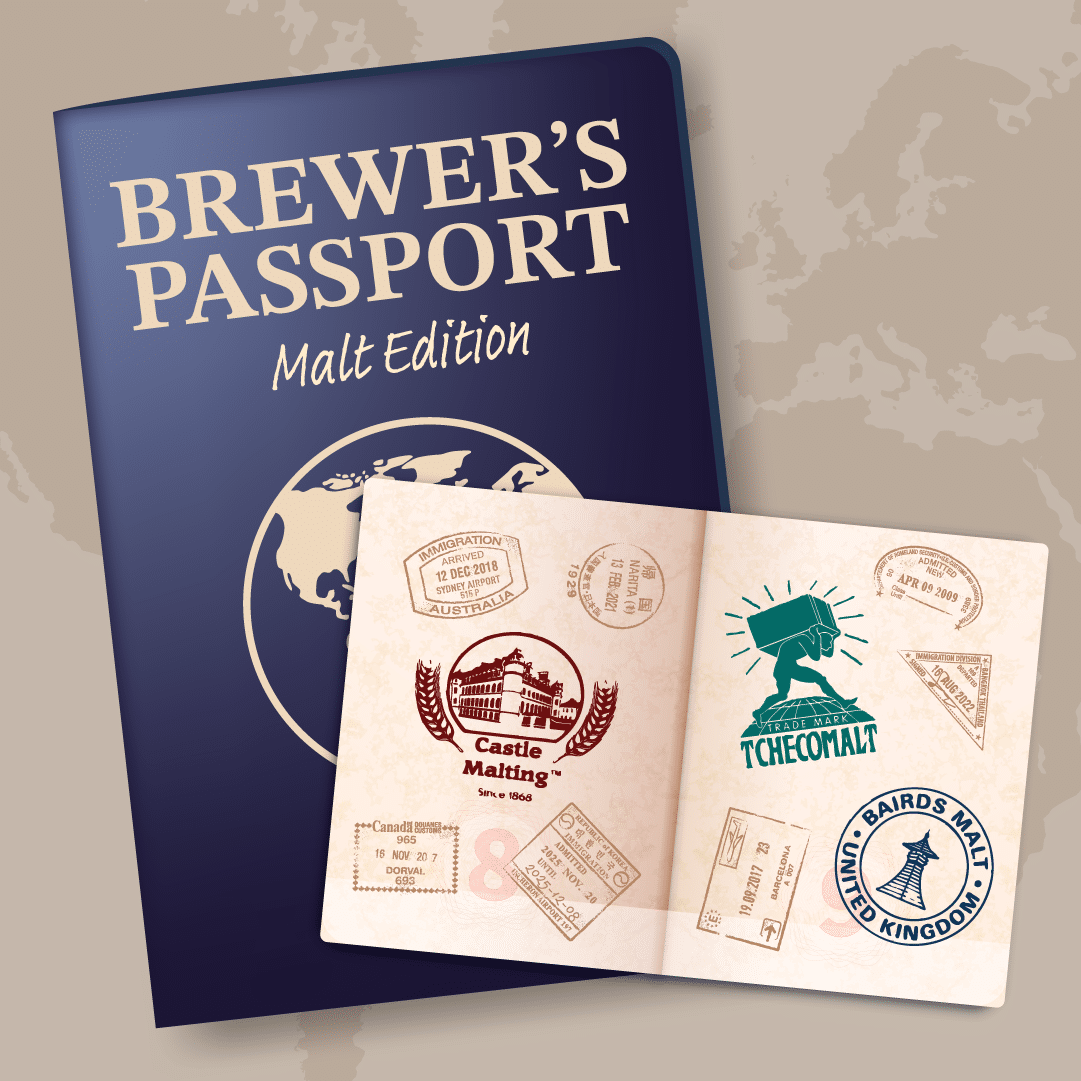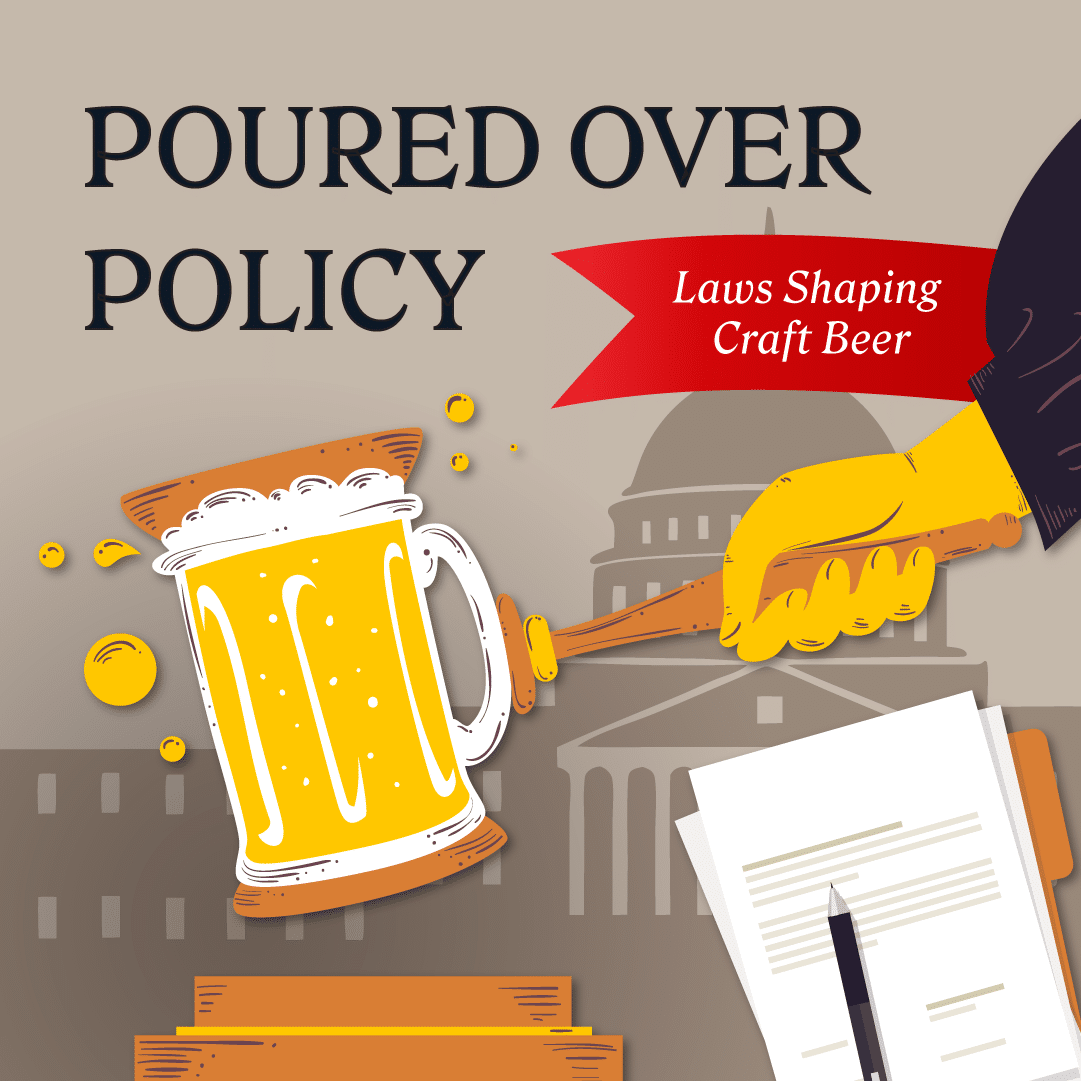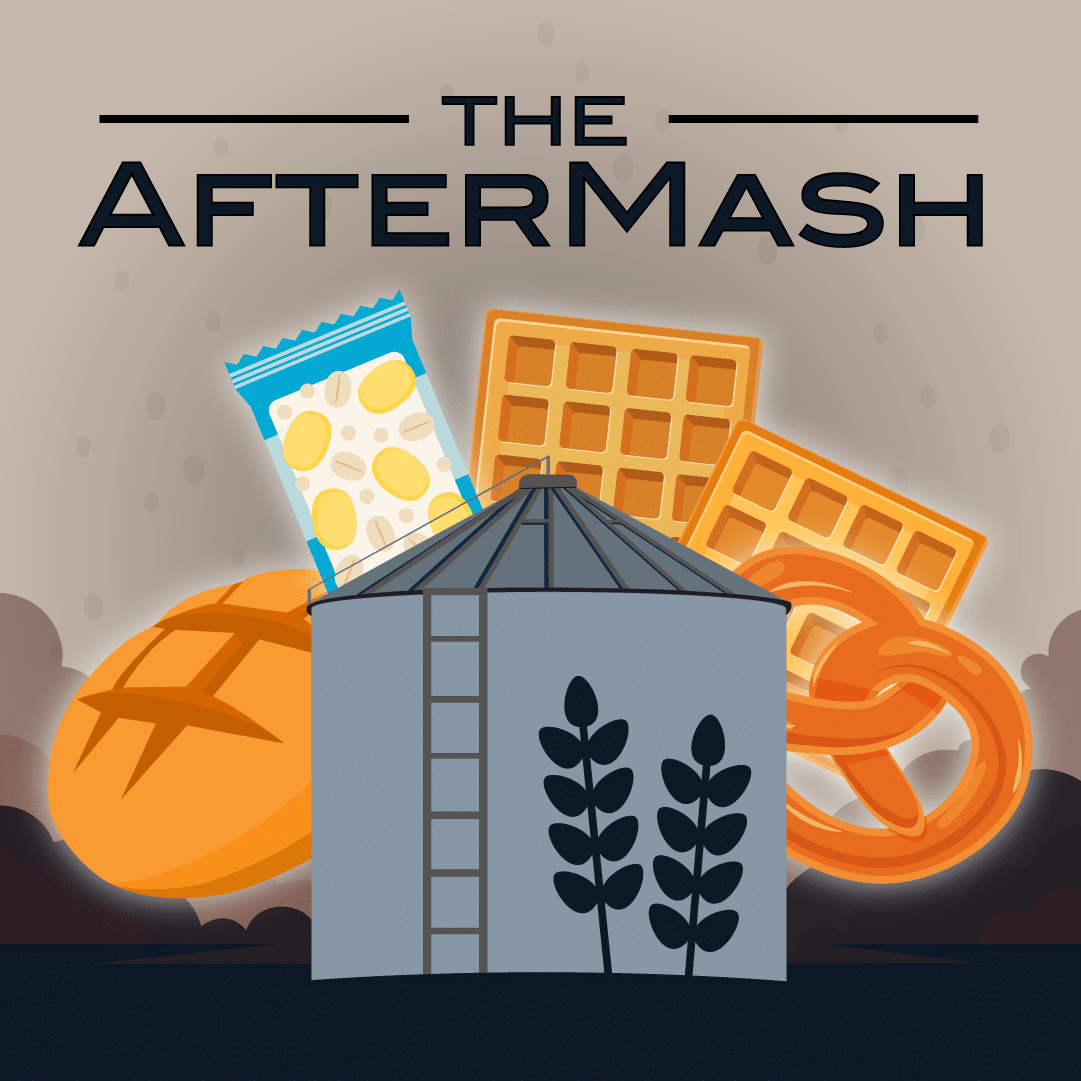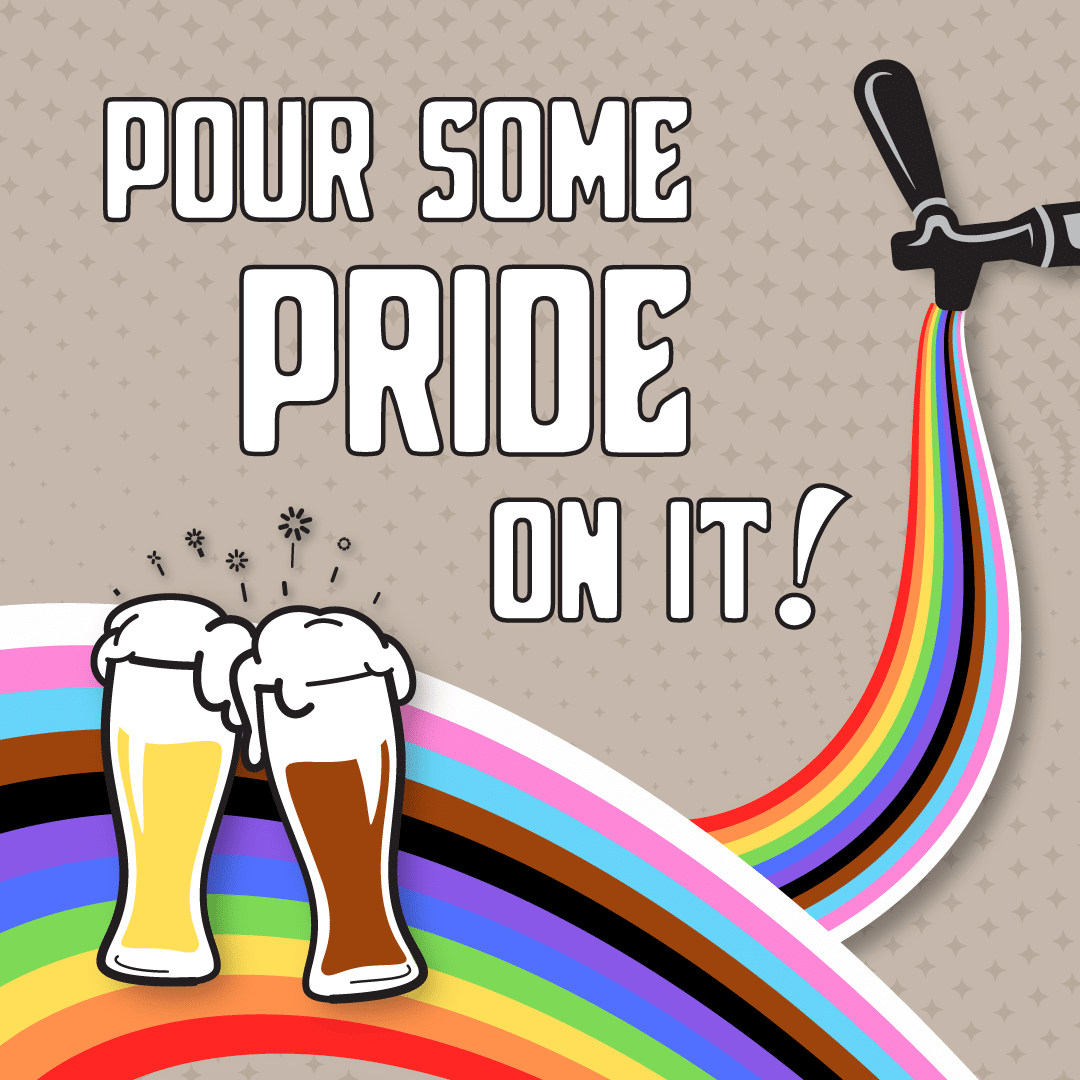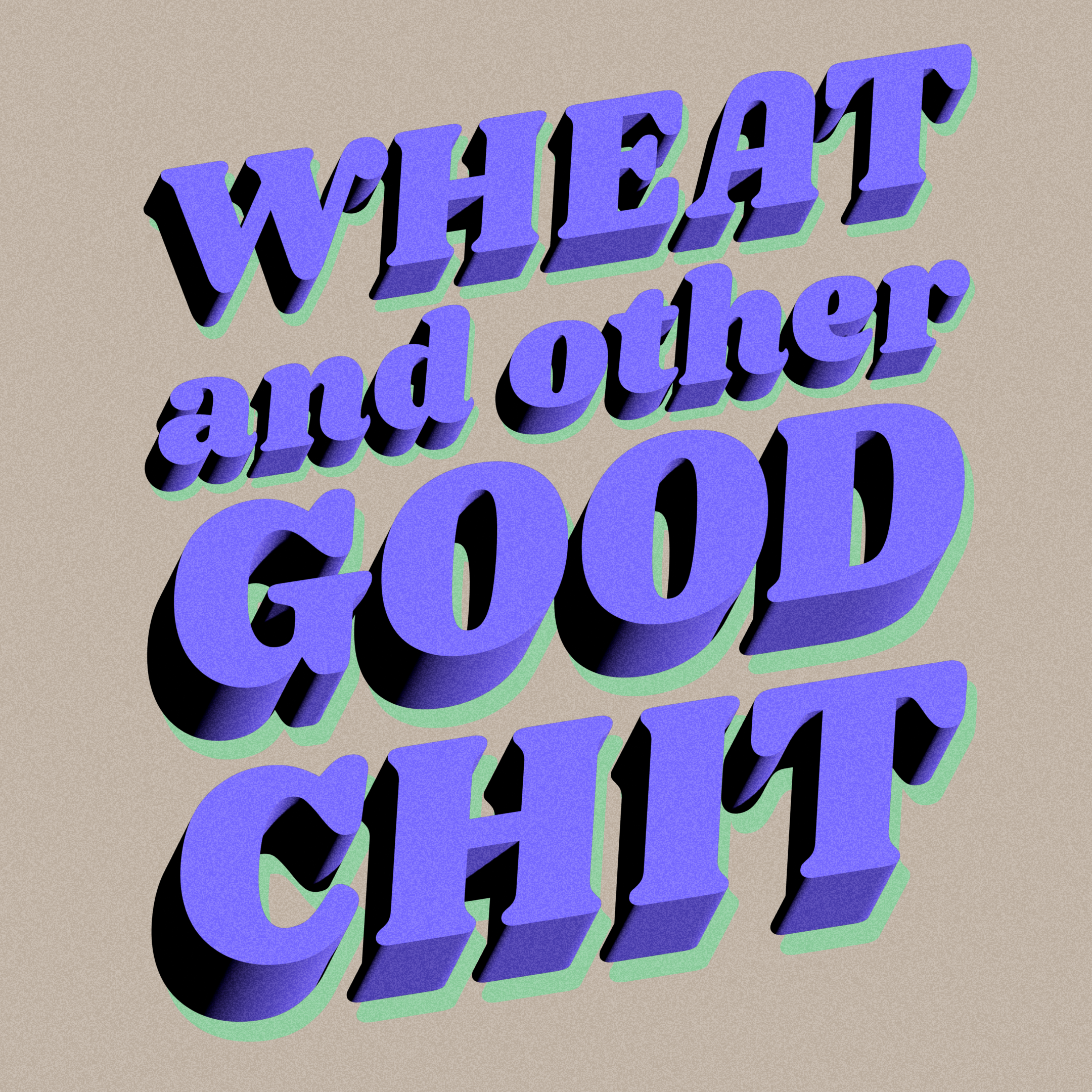
PODCAST GUESTS
John Walker

Grant Lawrence

EPISODE 10: FREE BEER!
PODCAST HOST:
TOBY TUCKER – DIRECTOR OF SALES, COUNTRY MALT GROUP
GUESTS:
JOHN WALKER – CO-FOUNDER, ATHLETIC BREWING COMPANY
GRANT LAWRENCE, TERRITORY MANAGER, COUNTRY MALT GROUP
Key Points From This Episode:
- USE THE CODE BREWDECK20 AT CHECKOUT TO GET 20% OFF OF ATHLETIC BEER FOR FIRST TIME CUSTOMERS WITH FREE SHIPPING ON 2 x 6-PACKS OR MORE! athleticbrewing.com
-
Knowledge John gained from working at Second Street that’s helped him with his non-alcoholic brewing.
-
The move John made to non-alcoholic craft beer; why he decided to fill this gap.
-
Athletic Brewing’s expansion and why they set up shop San Diego after Connecticut.
-
The process of developing brews early on and the homebrewing setup John had in his garage.
-
Styles John started with and Athletic Brewing’s current range.
-
Athletic Brewing’s branding; why it’s more like a culture than a brand.
-
What vacuum distillation does to flavor and some challenges with membrane filtration.
-
How malts present in non-alcoholic beer.
-
Why Athletic Brewing leads towards organic when it is possible.
-
The role that dry hopping plays in non-alcoholic beer flavor development.
-
Selling non-alcoholic beer; the unique advantages and challenges.
-
Finding distributors and how it has become easier over the past two years.
-
Difficulties Athletic Brewing has faced with supply chain disruptions this year.
-
The global popularity of non-alcoholic beer; worldwide trends.
-
A case for having a non-alcoholic beer in taprooms for small craft brewers.
-
When you make non-alcoholic beer, you have to have a legitimate food safety plan.
-
The accolade that has stood out most to John. • John’s mentors and role models, including his dad, Ken Grossman, and Ron Tweet.
Transcript - FREE BEER!
SEASON 1, EPISODE 10
[FREE BEER]
Host: Toby Tucker, Country Malt Group
Guest: John Walker, Athletic Brewing Company
[00:00:09] TT: I don’t know about anybody else, but I am ready for 2020 to be done. It’s been a brutal year, to say the least. Holiday is around the corner. Certainly, looking forward to those. Spending some time with the family. I do tend to have some vices around the holidays, unfortunately, like most of us do indulge in several different things, including adult beverages.
January rolls around like a lot of folks, setting a lot of goal s and looking at new year’s resolutions, getting into the fitness, and so forth. That’s why we’re calling today’s episode, free beer, as in alcohol-free. Hold on now. Don’t feel like we tricked you, because we’re in fact going to give out some prizes for free beer in the episode. I think we can do that without breaking any rules since there is no ABV and beers produced by Athletic Brewing Company. Pay attention to our social media and see if you can win some free beer. No better time to introduce my buddy, John Walker, Co-Founder and Head Brewer of Athletic Brewing Company. How you doing, John?
[00:01:14] JW: Doing well. Thank you. How are you doing?
[00:01:16] TT: I’m pretty good today. It’s Friday that we’re recording and I’ll tell you what, I can’t wait for this day to be done. I appreciate your time today.
[00:01:24] JW: Yeah, my pleasure. Happy to be here. Thanks for including us.
[00:01:28] TT: No worries. A little bit about you, we ran into each other, probably seven or eight years ago when you’re out in New Mexico. You were at Second Street Brewery there in Santa Fe and a really accomplished craft brewer there. Second Street, I know makes some fantastic award-winning beers themselves and many of Second Street’s beers are relatively low ABV styles. Did you find any influence that you had to start brewing alcohol-free beers? Was there something that pulled you in that direction?
[00:01:58] JW: Yeah. I mean, I can’t say that brewing there led me to non-alcoholic beer. This company and this mission drew me in independently. In designing the beers that we’re creating today that are under 0.5% were – I took a lot of cues that I learned from Rod and the team and the whole New Mexico brewing community, as far as how to get a ton of flavor into a lower alcohol beer. Definitely some techniques and some ingredients and some methodologies that I definitely utilized and learned from there that are definitely applicable here.
[00:02:37] TT: Yeah, it’s certainly a big leap overall. I mean, first of all, making a move from New Mexico to Connecticut, of all things. Then moving from brewing beers with alcohol to non-alcoholic beer for virtually a non-existent brewery in a category not a lot of people in North America, especially in the craft market are very aware of.
[00:02:58] JW: Yeah. It was definitely a big change. At first, I was taken aback when I spoke with Bill the first time. I did get it too. It made sense and the craft beer community is so explorative and creative. It was actually shortly after I talked to Bill for the first time, it was surprising that nobody had really gone into the non-alcoholic segment. It made sense that it needed to be explored. Then in addition to that, creative element and exploration, culturally. As far as beer reaching a wider audience, it made great sense to me too.
[00:03:36] TT: I think it’s perfect timing that we’re having this conversation. Over the last three or four weeks, really – unfortunately, spend a lot of time at home, like a lot of people. A lot of chatter about up-and-coming styles, what’s new, where the next big segment is in craft beer. What always shows up on the top is the NA beers. You guys have a location there in Connecticut, obviously. Then just recently opened out in San Diego, is that right?
[00:04:00] JW: Yeah. We started brewing in Stratford, Connecticut, where we built our first brewery. We do about somewhere around 11,000 barrels out of this facility. At the time we built it in 2017-2018, we had thought that it might supply us for three, four or five years. Turns out, it lasted about a year and a half at best. We quickly expanded our footprint here. Then again, just ran into capacity issues.
As we were soul searching and looking for the next stage of the company, we landed on the former ballast point facility that is in San Diego. Bill and I happened to be at GABF in Denver. Instead of coming back to Connecticut, we flew directly to San Diego for the day to look at the facility. Met over coffee after looking at it and never looked back. Now we have this amazing facility out in San Diego as well and an amazing team out there. Taking it from both sides of the country now. It’s pretty exciting.
[00:05:04] TT: Yeah, absolutely. What do you think your production barrelage will be end of this year? Just curious.
[00:05:10] JW: We’re hoping to be in the – we’ll be probably just under 40,000 barrels this year.
[00:05:17] TT: Gosh. 2017. Wow. It’s all NA beers?
[00:05:22] JW: Correct.
[00:05:23] TT: Gosh. That is wild. Well, congratulations to you. That is awesome. Absolutely very, very, very cool. Hopefully, we’ll continue to see that grow. Taking a leap back on you and how you stepped in and how you started figuring out some of these NA beers, you obviously – you couldn’t pilot brew recipes at the brewery prior to you guys opening up, because it wasn’t built yet. You pretty much home-brewed your own NA beer recipes for a good while, until you guys were up and rolling, right?
[00:05:54] JW: Yeah. We signed a lease on our warehouse in September. Then, knowing we had just come from a brewery built out in Santa Fe. I knew pretty well that it was going to be a while before we saw any equipment that was usable on the ground. That day we bought a bunch of home brewing equipment and started brewing in the warehouse. Then once construction started, I migrated that mobile operation, if you will, to my garage.
I would brew up there during construction. Bill would oversee the whole project and build the business. He would come up and help me bottle and then he’d go out and sample people on this wild, non-alcoholic beer that never existed.
[00:06:39] TT: How many brews over – what period of time did it take to get that process and that first NA beer dialed into your liking?
[00:06:51] JW: We were probably 30, 40 batches in before I started seeing light, personally, at the end of the tunnel. Then I’d say, probably another 30 to 40 batches after that where we started really nailing down the process and feeling things were fine-tuned and maybe at a place where we could step it up to our pilot and then production facility.
[00:07:22] TT: Particular style of beer that you went through that R&D process with, or was it a myriad of stuff?
[00:07:28] JW: Now, we kept it really simple and that’s reflected in our two flagships. We have the Upside Dawn Golden and then the Run Wild IPA. In brewing, IPAs are imperative and delicious and everybody loves hops. Not everybody, but most people. Definitely went with an IPA. Then, we also wanted to make a lighter, leaner, crisper beer that wound up also being hoppy, because we love hops again; just a little more approachable and lighter.
We started off with the Golden and the IPA and followed those through to the end and built a process around those two recipes and then developed that into all the other styles and brands that we have now.
[00:08:10] TT: How many styles, or how many brands, or segment products do you have thus far?
[00:08:16] JW: Yeah, so we have three flagships right now; two IPAs, one Golden. We’ve got two seasonals; stout and amber lager if you will. Vienna of sorts. Then, we also have a whole bunch of limiteds and pilot batches coming out of both facilities all the time, that we’ll release periodically in the market, or on e-commerce. Gosh, between the teams just crushing it on the creative end right now, we probably have 30 successful recipes.
[00:08:51] TT: God, that is great. It’s really not just a brand that I’ve seen from you guys. It’s more like a culture. Now, is that something that you guys set out to build originally?
[00:09:06] JW: Yeah. I do think that it was part of the DNA. It’s perfect and it makes total sense. A lot of what non-alcoholic beer had been prior to us and our comrades in this mission, it was the penalty box beer. Really, to make it successful and to make people approach it with a positive attitude and a positive light, there needed to be a culture shift and we need to develop a product and a brand and a drink segment that could be appreciated and was inclusive and positive.
I got to give credit to Bill when he was out there at all these races and was just fearlessly saying like, this is a good drink and this is positive. This feels good. That was definitely part of people in our segment now who are using the same language and that’s awesome. It’s perfect. It’s exactly what needed to happen. Yeah, we’re pumped for it.
[00:10:05] TT: Yeah. I’m proud, super proud of you guys. Obviously, want to continue to see you guys grow. Let’s go into the nuts and bolts if you will, talking about the process and raw materials, ingredients. Obviously, in your NA beers, there’s certainly a focus on preservation flavor. RO is driving off the alcohol with heat. What does vacuum distillation of alcohol do to the beer flavor? What are some of the hurdles overcome in membrane filtration?
[00:10:36] JW: Vacuum is usually, or it was high, but now it’s low-temperature. Distillation, it’s just a temperature removal of the alcohol and essences and then you can re-inject a lot of those essences back. RO filters out the alcohol and the water and then you’re left with your sugary mass. You can re-dilute down that concentrate. There are challenges on both sides. Heat treatment is always a concern when you’re dealing with volatile hop components and malt components and aromas and stuff like that.
Are things the same after they’ve been treated? I don’t think so. Similar goes for RO; less heat more just adaptation and more of a science in minerality and how to introduce water back to make sure that you’re still coming out with a beer component. I mean, there are challenges to both those methods that are super interesting. I think a lot of those things and challenges can be overcome just simply by recipe design.
[00:11:41] JW: Yeah, absolutely. Then talking about malts. Obviously, my company is in the malt business and other products as well, but that’s the core of it. Do malts present differently in alcohol-free beers versus standard beers? Do you gravitate towards certain malts for your recipes and why?
[00:12:02] JW: Yeah. I think a lot of them can change over time, especially depending on the treatment that you’re using. Ultimately, it’s all the same malts. We don’t gravitate towards anything. We design the malt bill, just as you would with a full-strength alcoholic beer. We use the same crystals, the same kiln malts. Really nothing different. Yeah, basically it’s you just have to find the right and highest quality malt. Through great partners like you guys, we can do that.
[00:12:36] TT: I know Great Western Malting, specifically, does some unique stuff for you guys on the West Coast. It seems like when there is an option, you guys lean towards organic when that’s available. It’s really cool. Number one, is there a specific reason? Obviously, you guys can’t claim you’re a 100% organic that I know of, but you guys seem to lean towards organic when you have the option.
[00:13:02] JW: Yeah, we do. That’s important to us. Basically, the reason for that is a lot of those times that people are taking the extra care to make it organic with that just and by design and by nature, people are caring more about that product. We tend to think that it’s reflected in the quality and taste of the product at the end-user. It also supports a better mission and ethos and we’d love to become more sustainable and get away from GMOs and pesticides that are really terrible and harmful for our environment and the people consuming our products and the world. There’s a direct flavor impact, but a greater mission.
[00:13:49] TT: No, no. I love that view. Obviously, the work is at a premium. Those folks like yourself that lean towards that for those reasons are really, really commendable.
[00:14:01] JW: Thank you.
[00:14:02] TT: Cool. Another factor in NA beer innovation is we talked about it, the contributions that new hop varietals lend in flavor and aroma, versus when NA beers were produced previously, like my grandpa’s NA beer. Considering the extra process involved in removing alcohol from your beers, how important is dry-hopping to create the flavor profiles? Do hop flavors come through differently in standard beer versus alcohol-free beer in your experiences and how?
[00:14:32] JW: Yeah. A couple things, dry-hopping is critical, as is with standard beer of any sort. It’s style specific, but it really showcases the hops, the best, I think, in that particular field. To clarify, we don’t ever remove any alcohol from our products. The way we use hops is pretty creative, but generally, pretty traditional.
That being said, yeah, dry-hopping is still key and super important. We love it and we do a lot of exploration with all the new hops. We’ve got this single-hop series that just like in alcoholic beers, we have our single-hop series that does a fantastic job at showcasing those hops and how dynamic hops are in general. It’s super exciting and something to keep an eye out for. We have a single-hop of Sabro right now, which is just out of control.
[00:15:32] TT: That’s cool. Interested in trying that one. There aren’t any laws against selling NA beers online, and correct me if I’m wrong here, but compared to a brewery producing beers with alcohol, can you compare and contrast the difference and challenges that you face and that you don’t face?
[00:15:50] JW: In terms of selling?
[00:15:51] TT: Yeah. Yep.
[00:15:52] JW: Yeah. You’re right, mostly. There are a number of states where non-alcoholic beer is considered beer. Word to the wise, if you’re shipping even non-alcoholic beer, make sure that those states are in-tune with what you’re doing because not all of them are. They have a lot of antiquated laws and stuff like that. Yeah. I mean, we were able to reach our consumers directly. We’re able to have what we consider to be our national taproom and that is our e-commerce platform, where we can go directly to our customers from our warehouse. It’s literally coming off the packing line and going into a box and it’s hitting people’s doorsteps in one, two, three days.
We get direct feedback, just like you would at a pub or a taproom. That is just the best thing ever. It helps us learn more about our product and our process. It also really helps us get to know our customers and our teams better and it’s fun. It’s creative. Because our process is unique, we can get all this creative stuff out to many different people all the time.
Past that, where we follow a lot of traditional channels as far as distribution because our distribution partners are experts at what they do. I mean, and they have these long-standing relationships in the communities and they’re just really perfect at distribution and relationships. It’d be crazy not to go with them because they’ve been at it so long and they have such a great track record.
In almost all territories that we’re in, or in every single territory that we’re in, we’re with a traditional distributor. Then we also have teammates who are on the ground supporting those distribution companies.
[00:17:42] TT: Do you guys find it a challenge interviewing and searching for distributors, considering this is somewhat of a new market on the craft side?
[00:17:51] JW: It was a little more challenging two years ago. It’s far less challenging now because the world has opened up a lot to non-alcoholic and health and wellness in general. People are seeing it as a really durable and huge trend that is really just opening up. The conversations and the education hurdles are much easier now than they were.
[00:18:20] TT: Another question. Since your beer is alcohol-free, what is the tax situation like, if you don’t mind me asking? Do you still have to go through that bureaucracy and that typical crap brewer’s face that are bruins in producing standard beers?
[00:18:33] JW: I mean, we still have to file, but as far as paying the excise tax now.
[00:18:39] TT: Yeah. They’ll come get you either way. There’s been a lot of challenges for craft brewing this year, obviously. One of the things that we see is just the supply chain of a lot of different products. Specifically, right now, cans. Have you had that challenge as well? Have you had some difficulties maintaining consistent supply with not only cans but other products from vendors as well?
[00:19:05] JW: Yes. Yes and no. We’ve been super lucky we’ve been in a great place, on a canned front, yeah, just like everybody else. I mean, our COO, Jamie, probably spends 75% of his days trying to track down cans. At this point, you’re buying from far-off distant countries and hoping that they work. Everybody’s facing the same challenge and especially as you’re trying to grow capacity and grow volume, definitely not easy.
The customers see it to some effect too. Everybody asks that everybody’s a little bit flexible because we’d love to be all in pre-print cans. You can’t always have them right now. Sometimes we have to label. As a company, that we would rather have packaging that is not always consistent right now, but have beer in the market. Having product out there is more important right now than having absolutely consistent packaging. That’s just a pill we had to swallow.
[00:20:09] TT: What about the global perspective? The popularity of NA beers the same trend outside of North America? I mean, are we seeing similar segments pop up in Germany and other European countries?
[00:20:27] JW: Yeah. We’re not seeing them, because they happened a long time ago. When we first started, a lot of what this model was built out on was the success of non-alcoholic beer and the non-alcoholic beer culture in Europe and Australia and honestly, the rest of the world. For whatever reason, we just had this long-standing stigma that was terrible in it. Don’t know why. We just couldn’t get past it. Spain is somewhere around – it’s 15% of their beer market. Germany is around 11%. These are huge numbers. When we started, NA beer was at 0.20% of the craft market.
[00:21:09] TT: Wow. I’m sorry, where do you think we are now in North America, as far as impact on overall production as far as the NA is concerned?
[00:21:18] JW: Bill is really the numbers wizard, but I think we’re probably up one and change, one and a half maybe.
[00:21:26] TT: Gosh. Yeah.
[00:21:28] JW: It’s growing a lot. It’s like 30%. It’s definitely growing. You can see that reflected in all the – there are a lot of bigger players coming out with new non-alcoholic beers now.
[00:21:38] TT: Sure. Sure. I certainly don’t want to give away any secrets. Obviously, you have your segment you guys want to hold on to. For those smaller craft brewers that are on-premise only and really take pride in serving beer out of the taproom, is it something that you would suggest they look into, as far as trying to brew an NA beer and have something continuously on tap as an option for patrons after COVID goes away obviously?
[00:22:08] JW: Yeah. Yeah. I mean, we’ve been discussing that a lot. We definitely think that non-alcoholic beer has a place on draft in a big way coming up, because a lot of these places that have been built in the past couple years, breweries and taprooms alike, and beer bars, they’ve got 30, 50, 80 taps. Would be silly not to have two non-alcoholic options.
There’s definitely a place for them. I don’t want to discourage anybody, because I think it’s fun and it’s awesome and it’s explorative and everything about craft. The one thing in hindsight is food safety and integrity of the product, especially if you’re going to hit the non-alcoholic market and you are answering to the FDA then and that’s a big change. You have to have a real, legitimate food safety plan and make sure that that product never creeps up over 0.5% because that’s dangerous and you’re serving to sensitive populations potentially.
I’m all for the exploration and being creative, but definitely a word of caution as far as the sensitivity of creating a non-alcoholic beer that as we well know, one yeast cell can do a whole lot.
[00:23:33] TT: I’m glad you mentioned that. It’s something that I certainly didn’t think about as far as FDA and some of those regulations there. Very good.
Well, you guys are growing fast as we discussed. What’s interesting is you guys are winning awards. A lot of times, really coming out and winning awards up again and taste test, obviously, against beers produced with alcohol.
Just to name a few here, grand champion of non-alcoholic beers by the Growler Magazine. The International Beer Challenge named you guys Brewer of the Year. Then obviously, some world beer awards. I’m sure there’s many, many more. What’s the biggest honor for you and Athletic Brewing so far?
[00:24:16] JW: The honor part, I can take in any number of ways. That could be an internal, more grand topic. From an award standpoint, the supreme champion of the International Beer Competition and the North American brewer of the year award, coming from that was absolutely incredible, because we won the non-alcoholic beer category. Then what was really, really awesome to see was that we went up in the best in show competition with all of the winners of all the alcoholic segments and won overall against all of them.
That is incredible for the team, one, and beer in general and culture. There’s a definite culture shift and that’s awesome to see. People are starting to view this as an awesome drink and it’s respected. People recognize that it can stand on its own two feet next to beer and it’s not like, we’re trying to cut beer out, but we’re just trying to add another one to the already awesome list.
[00:25:25] TT: I can second that. We’ve got a majority of our staff on our sales side at the Country Malt Group are brewers by trade. The feedback I’ve gotten from them, they dabble in some of your products is really unbelievable. Half the time, they enjoy drinking it more so than some of their favorite standard beer. You guys are doing a fantastic job.
[00:25:50] JW: Thanks. Appreciate it.
[00:25:51] TT: Who have been your mentors, inspirations in the brewing industry as you progress your career?
[00:25:58] JW: A far throwback to my dad, who introduced me to Sierra Nevada Pale Ale. That’s first and foremost, that’s where my definition of beer came from. I’m ever grateful for that, because to this day, Ken Grossman and the entire Sierra Nevada team, their whole business as a community too is just an inspiration.
Yeah, past that, geez, Rod Tweet at Second Street Brewery, the entire team there, Jordy, that’s where I learned everything from the beginning. Then the entire craft brew community in New Mexico was so generous and kind and sharing. Ted or Josh Trujillo from Marble, or Jeff from La Cumbre or Daniel. Those crews were huge in just helping me learn what I know today. Huge shout out to all them.
[00:26:56] TT: Yep. Again, I second that. I know the guys in there are solid individuals. I miss seeing them. That’s for sure. John, thanks so much for joining us here today on The BrewDeck, I really dig what you guys are doing. It’s not only cool, but it’s an important service to all the people who enjoy the full flavor of craft beers that not specifically looking for the alcohol.
For those of y’all listening, if you haven’t had it yet, please give it a try. As John mentioned, you can order their product online. I’ve done it. It’s seamless. It’s good stuff. John, thanks again and I appreciate your good work and keep at it, because we enjoy it.
[00:27:32] JW: Yeah. No, my pleasure, and really appreciate you having us on to share.
[00:27:36] TT: Yeah, absolutely. Thanks for the business again.
[END]
